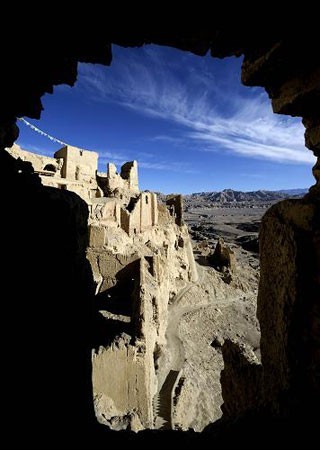
Picture shows
the ruins of the Guge Kingdom in Tsada County, Ngari Prefecture, west
Tibet, photo from Xinhua.
Accroding to
China Tibet Information Center report, Chinese archaeologists have found
Buddhist relics belonging to the early Guge Kingdom of the 11th century
in the Cazi Valley on the Chinese side along the Sino-India border.
"The Cazi
Valley is located in the Bolin Village, Tsada County, Ngari Prefecture,
western Tibet," said the archaeologists.
The Guge
Kingdom dominated the western areas of Tibet from the mid-10th century
to the 17th century and was once "the Crossroad of Civilizations"
linking China, South and Central Asia.
The discovery
is important for differentiating different Buddhist art styles of the
Guge Kingdom and also offers an important evidence to the early history
of restoration of Buddhism (from late 10th century to 11th century) in
western Tibet.
The relics
are not only closely connected with the culture of Tibet's central
areas, but also resemble the Tibetan Buddhist monasteries in
India-controlled Kashmir. They demonstrate that the Tibetan Buddhist art
is the main cultural influence on the Sino-India border.
Besides, from
the relics, archaeologists have found traces lefe by artists from
India, Nepal and Central Asia.